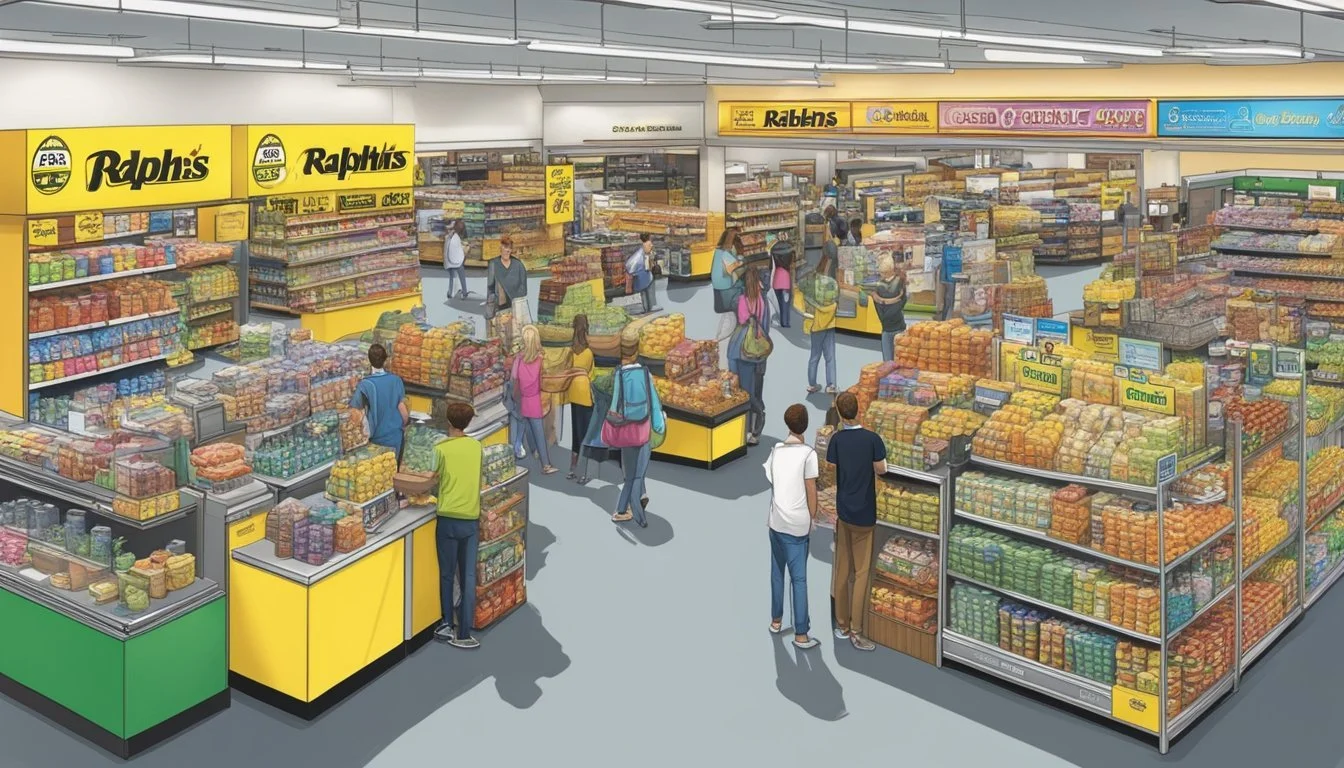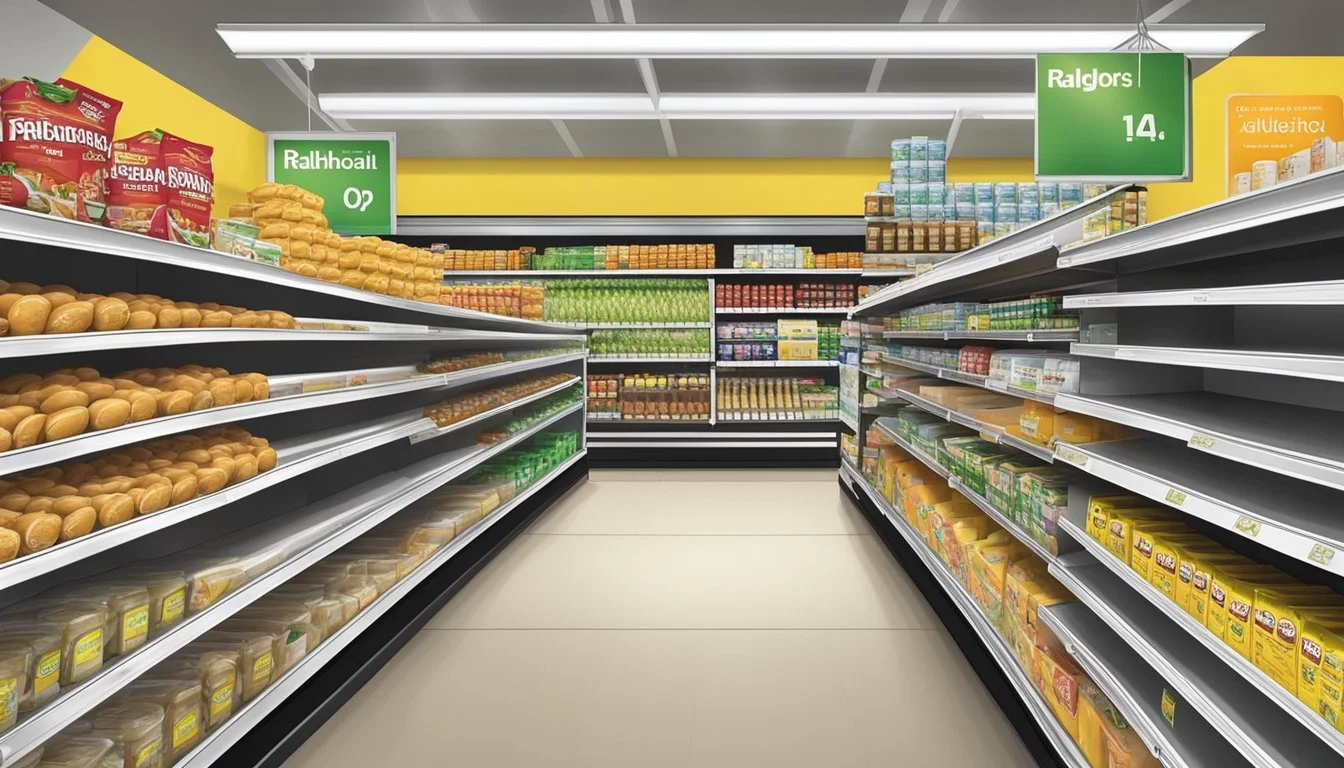Dollar General vs Ralphs
Comparing Prices, Selection, and Quality
Grocery shopping can be a significant part of household budgets, making the choice of store crucial for many families. Dollar General and Ralphs are two popular options, each with its own unique offerings and pricing strategies. While Dollar General focuses on providing everyday essentials at discounted prices, Ralphs aims to offer a wider selection of products, including fresh produce and specialty items.
When comparing Dollar General and Ralphs, Ralphs generally offers better overall value for a full grocery shopping experience, despite potentially higher prices on some items. Dollar General excels in providing affordable household basics and packaged goods, making it a go-to for quick purchases or specific budget-friendly items. However, Ralphs typically provides a more comprehensive grocery selection, including higher-quality fresh produce, meats, and bakery items.
The choice between these two stores ultimately depends on individual shopping needs and preferences. Shoppers looking for the lowest prices on basic items may prefer Dollar General, while those seeking a broader range of products and fresher options might find Ralphs more suitable. Factors such as store location, product quality, and customer service also play important roles in determining which store offers the better overall shopping experience.
Brand Overview
Dollar General and Ralphs represent two distinct approaches to grocery retail in the United States. These chains cater to different consumer segments and have unique market positions.
Dollar General's Market Presence
Dollar General has established itself as a prominent discount retailer across the United States. With over 18,000 stores in 47 states, it primarily serves rural and suburban communities. The chain focuses on offering everyday essentials at low prices.
Dollar General's product mix includes groceries, household items, and personal care products. Its compact store format allows for quick shopping trips. The company targets budget-conscious consumers and families looking for convenience and value.
In recent years, Dollar General has expanded its fresh produce offerings in select locations. This move aims to capture a larger share of the grocery market, particularly in areas with limited access to full-service supermarkets.
Ralphs' Position in the Supermarket Chains
Ralphs, a subsidiary of Kroger, operates as a major supermarket chain primarily in Southern California. Founded in 1873, it has a long-standing presence in the region's grocery landscape. Ralphs caters to a broad range of consumers, from budget-minded shoppers to those seeking premium products.
The chain offers a full-service grocery experience with extensive produce, meat, and bakery departments. Ralphs stores typically feature larger formats compared to Dollar General, allowing for a wider product selection.
Ralphs has adapted to changing consumer preferences by introducing organic and natural food sections. The company also emphasizes its loyalty program and digital coupons to attract and retain customers in the competitive Southern California market.
Pricing and Value Proposition
Dollar General and Ralphs employ distinct pricing strategies to attract customers. Their approaches to discounts, savings, and loyalty programs shape their overall value propositions.
Comparing Price Points
Dollar General focuses on everyday low prices, especially on household essentials. Many items are priced at $1 or less, appealing to budget-conscious shoppers. Ralphs, owned by Kroger, offers competitive prices on a wider range of products, including fresh produce and name-brand goods.
Dollar General's limited selection keeps costs down, while Ralphs provides more variety at slightly higher price points. For basic necessities, Dollar General often beats Ralphs. However, Ralphs frequently offers better deals on perishables and premium brands.
Discounts and Savings Strategies
Both stores use various tactics to provide customer savings. Dollar General relies on simple pricing and occasional markdowns. They offer digital coupons through their app and run weekly specials on select items.
Ralphs employs a more diverse savings approach. They use loss leaders, digital coupons, and personalized discounts based on shopping history. Ralphs' weekly ad features more extensive deals across departments compared to Dollar General's limited specials.
Loyalty Programs and Promotions
Dollar General's DG Digital Coupons program allows customers to clip coupons digitally for instant savings at checkout. The program is straightforward but offers fewer perks compared to more comprehensive loyalty schemes.
Ralphs' loyalty program, tied to the broader Kroger family, provides more benefits. Members earn fuel points, receive personalized offers, and access digital coupons. The program integrates with the Ralphs app, enabling easy savings tracking and redemption.
Ralphs also runs seasonal promotions and themed events, offering additional savings opportunities throughout the year. Dollar General's promotional calendar is less extensive, focusing primarily on holiday-related discounts.
Product Range and Quality
Dollar General and Ralphs differ significantly in their product offerings and quality standards. These differences impact customer shopping experiences and influence buying decisions based on individual needs and preferences.
Assortment of Grocery Items
Dollar General focuses on providing a limited selection of essential grocery items at low prices. The store stocks basic pantry staples, canned goods, and frozen foods. Ralphs, in contrast, offers a much wider variety of grocery products. Customers can find an extensive range of options in each category, from everyday items to specialty foods.
Ralphs carries a broader selection of international cuisine ingredients, gourmet products, and dietary-specific items like gluten-free or low-sodium options. Dollar General's inventory is more streamlined, emphasizing convenience and affordability over variety.
Fresh Produce and Meat Quality
Ralphs excels in fresh produce and meat offerings. The store typically features a large produce section with a diverse selection of fruits and vegetables, including organic options. Ralphs' meat department often includes a full-service counter with butchers on staff, providing custom cuts and a variety of fresh meats.
Dollar General's fresh produce and meat options are limited. Some locations may offer a small selection of basic fruits and vegetables, but the quality and freshness can be inconsistent. The store's meat offerings are usually restricted to pre-packaged items and frozen products.
Organic and Health-Conscious Selections
Ralphs caters to health-conscious consumers with a dedicated organic section and numerous health food options. The store stocks a wide range of organic produce, dairy products, and pantry items. Customers can find various plant-based alternatives, superfoods, and specialty health products.
Dollar General's organic and health-conscious offerings are minimal. While some locations may carry a few organic or health-focused items, the selection is limited and not a primary focus of the store's inventory.
Store Brands vs. National Brands
Both Dollar General and Ralphs offer a mix of store brands and national brands, but with different approaches. Dollar General emphasizes its private label products, which are often priced lower than national brands. These store brands cover basic grocery items and household goods.
Ralphs carries a more extensive selection of national brands alongside its own private label products. The store's brand, Simple Truth, includes organic and natural options. Ralphs typically provides more choice between store and national brands across various product categories, allowing customers to compare prices and quality.
Shopping Experience and Services
Dollar General and Ralphs offer distinct shopping experiences tailored to different customer needs. Their store layouts, cleanliness standards, and customer service approaches shape how shoppers interact with each retailer.
Store Layout and Convenience
Dollar General focuses on a compact, no-frills layout. Stores are typically smaller, making them quick to navigate. Aisles are arranged for efficiency, with everyday essentials prominently displayed. The checkout process is usually swift due to the smaller store size and product range.
Ralphs stores are larger and more comprehensive. They feature wide aisles and clearly marked departments. The layout accommodates a broader selection of products, including fresh produce, bakery, and deli sections. Self-checkout options are common, offering customers flexibility.
Cleanliness and Organization
Dollar General maintains basic cleanliness standards. Stores are generally tidy, but may not always match the polished appearance of larger supermarkets. Product organization can vary between locations, with some stores appearing more cluttered than others.
Ralphs typically upholds higher cleanliness standards. Floors are regularly cleaned, and shelves are well-organized. The produce section is usually pristine, with staff frequently restocking and removing damaged items. Restrooms and common areas are maintained throughout the day.
Customer Service and Staff
Dollar General employs a lean staff model. Employees are often multitasking, handling various store duties. This can sometimes lead to longer wait times for customer assistance. Staff are typically knowledgeable about store layouts and basic product information.
Ralphs invests more in customer service. Dedicated staff members are usually available in each department. Employees receive training in product knowledge and customer interaction. Service desks offer additional support for returns, exchanges, and special requests.
Location and Accessibility
Dollar General and Ralphs have distinct geographic footprints and serve different market segments. Their store locations and accessibility significantly impact customer convenience and shopping experiences.
Urban vs. Rural Market Coverage
Dollar General focuses on rural and suburban areas, often serving communities with limited retail options. The chain targets towns with populations under 20,000, filling gaps where larger retailers are absent. This strategy makes Dollar General a lifeline for rural families seeking affordable groceries and household items.
Ralphs, in contrast, primarily operates in urban and suburban areas. Its stores are typically larger and offer a wider product range. Ralphs caters to densely populated regions, providing convenient access for city dwellers and suburban shoppers.
Southern California and National Reach
Ralphs maintains a strong presence in Southern California, with most of its stores concentrated in this region. The chain is deeply rooted in the area's communities, offering familiar shopping experiences to local residents.
Dollar General boasts a much broader national reach. As one of the largest retail chains in the United States, it operates stores across 46 states. This extensive network allows Dollar General to serve diverse communities from coast to coast, making it a recognized brand in many parts of the country.
Operational Efficiency
Dollar General and Ralphs employ different strategies to maximize their operational efficiency. These approaches impact their supply chains, inventory management, and overall financial performance.
Supply Chain and Distribution
Dollar General operates a vast network of distribution centers across the United States. The company utilizes 18 strategically located facilities to serve its 18,000+ stores efficiently. These centers employ advanced logistics systems to manage the flow of goods.
Ralphs, as part of the Kroger family, benefits from a more extensive distribution network. Kroger operates 44 distribution centers, including dedicated facilities for perishables. This setup allows Ralphs to maintain consistent product availability across its stores.
Both chains use rolltainers to streamline product movement from distribution centers to store shelves. This method reduces handling time and improves efficiency in restocking processes.
Inventory Management
Dollar General focuses on a lean inventory model. The company stocks a limited assortment of fast-moving items, primarily in small package sizes. This approach reduces carrying costs and minimizes waste.
Ralphs employs a more diverse inventory strategy. The chain offers a wider range of products, including fresh produce and specialty items. To manage this complexity, Ralphs uses advanced forecasting tools and data analytics.
Dollar General has been expanding its fresh and frozen food offerings by installing coolers in stores. This initiative aims to increase customer visits and basket sizes.
Revenue and Sales Performance
Dollar General has shown strong revenue growth in recent years. The company's annual sales reached $37.8 billion in fiscal year 2022, a 10.6% increase from the previous year. Same-store sales growth has been consistent, driven by increased customer traffic and higher average transaction amounts.
Ralphs' performance is reported as part of Kroger's overall results. Kroger's total sales for fiscal year 2022 were $137.9 billion. The company has experienced steady same-store sales growth, excluding fuel, indicating strong customer loyalty and effective pricing strategies.
Dollar General's focus on rural and underserved markets has contributed to its robust sales performance. Ralphs, with its emphasis on urban and suburban locations, faces more intense competition but benefits from higher population density.
Competitive Landscape
Dollar General and Ralphs operate in a complex retail environment with numerous competitors vying for market share. Both face challenges from traditional grocery chains, discount retailers, and e-commerce giants.
Comparison with Other Retailers
Dollar General competes primarily with other discount stores like Dollar Tree and Family Dollar. It has a larger store count than these rivals, with over 18,000 locations across the United States. Ralphs, as part of the Kroger family, faces competition from major grocery chains such as Safeway, Albertsons, and Vons.
Walmart poses a significant threat to both Dollar General and Ralphs. Its extensive product range and competitive pricing appeal to budget-conscious shoppers. Target also competes in this space, offering a mix of groceries and general merchandise.
Amazon's expansion into grocery retail through Whole Foods and its online platform has intensified competition. Trader Joe's and Sprouts Farmers Market cater to health-conscious consumers, potentially drawing customers away from traditional grocers like Ralphs.
Market Competition and Strategies
Dollar General focuses on rural and low-income urban areas, often opening stores in locations underserved by larger retailers. This strategy has helped it capture a significant market share in these regions. The company emphasizes everyday low prices and a convenient shopping experience.
Ralphs competes by offering a wider product selection, including fresh produce and prepared foods. It leverages its parent company Kroger's purchasing power to maintain competitive pricing. Ralphs also invests in customer loyalty programs and digital initiatives to enhance the shopping experience.
Both retailers face pressure from e-commerce growth. To counter this, Dollar General has introduced digital coupons and is expanding its fresh food offerings. Ralphs has invested in online ordering and delivery services to meet changing consumer preferences.
Publix, known for its customer service, presents a challenge in certain markets. Discount stores and dollar stores continue to expand, putting pressure on traditional grocers like Ralphs to maintain market share.
Consumer Insights
Consumer preferences and economic factors play crucial roles in shaping grocery shopping habits. These elements influence where people choose to shop and how much they spend.
Customer Preferences and Trends
Consumers increasingly prioritize value and convenience when selecting grocery stores. Dollar General attracts budget-conscious shoppers with its low prices and wide product range. The store's smaller format appeals to those seeking quick trips.
Ralphs, on the other hand, caters to customers who desire a more traditional supermarket experience. It offers a broader selection of fresh produce, meats, and specialty items. Many shoppers appreciate Ralphs' loyalty programs and digital coupons.
Both stores have adapted to changing consumer demands by expanding their product offerings. Dollar General now stocks more groceries and household essentials. Ralphs has increased its selection of organic and health-focused products.
Impact of Economic Factors
Economic conditions significantly influence shopping behaviors. During recessions or periods of financial uncertainty, many consumers gravitate towards discount retailers like Dollar General.
Family Dollar, a competitor in the discount space, has also seen increased traffic during economic downturns. These stores benefit from consumers' desire to stretch their budgets further.
Ralphs may experience fluctuations in customer base depending on economic conditions. In tighter times, some shoppers might opt for lower-priced alternatives. However, Ralphs maintains customer loyalty through competitive pricing strategies and targeted promotions.
Rising inflation can impact both stores differently. Dollar General's fixed price points may require adjustments, while Ralphs' diverse pricing structure allows for more flexibility in response to market changes.
Conclusion
Dollar General and Ralphs cater to different shopper needs and preferences. Dollar General excels in offering budget-friendly options for everyday essentials. Its widespread locations make it convenient for many customers.
Ralphs, as part of the Kroger family, provides a more traditional grocery store experience. It offers a wider selection of fresh produce, meats, and specialty items. Ralphs also tends to have competitive prices on many products.
For those prioritizing low prices on basic necessities, Dollar General is often the better choice. Shoppers seeking a full-service grocery store with more variety may prefer Ralphs.
Both stores have their strengths. The best option depends on individual shopping habits, budget constraints, and product preferences. Many consumers find value in shopping at both stores to maximize savings and selection.
Ultimately, the "better" store comes down to personal needs. Budget-conscious shoppers may lean towards Dollar General, while those wanting a broader grocery selection might choose Ralphs.








